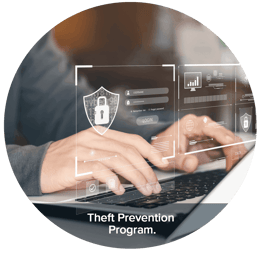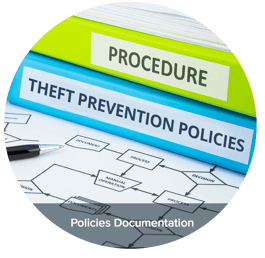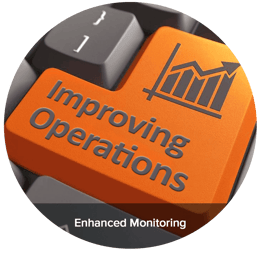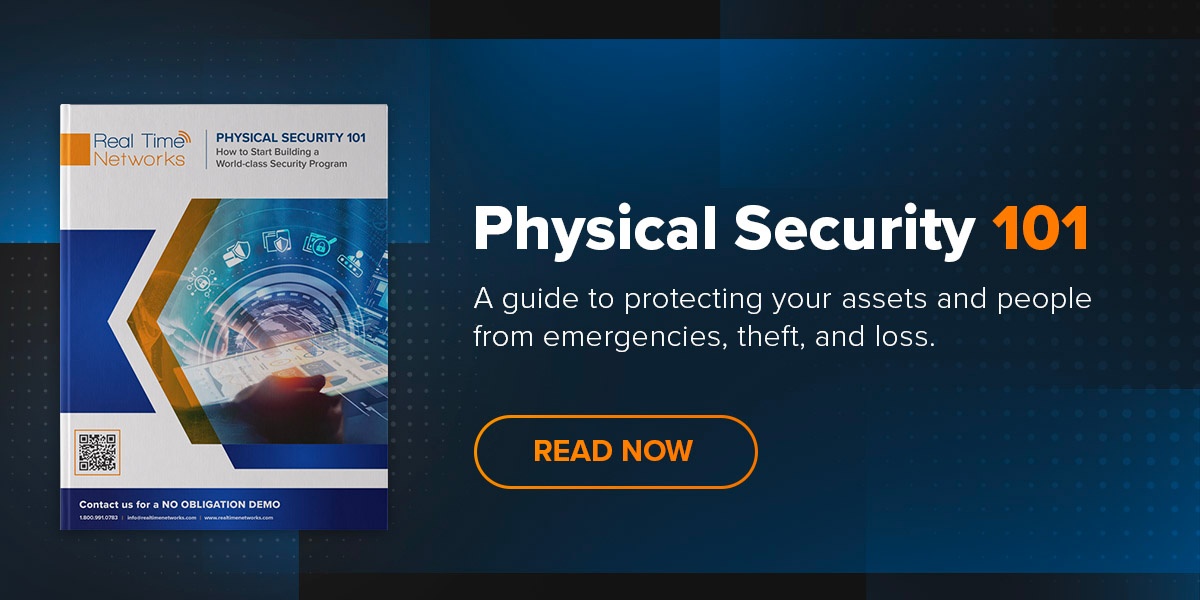By Jay Palter | December 1, 2021
Theft is something companies of every size have to contend with. Of course, the specific nature of that theft will vary business-to-business, but there are important underlying patterns every company should understand.
If you don’t already have one, you should think about developing a business theft prevention program for your company. Sound daunting? Well, it isn’t.
In this article, we’ll explain just how to think about theft and loss prevention. Then we’ll share twelve effective ways for preventing theft in your workplace.
Think About Business Theft As Either Internal or External
There are many ways to think about business theft, but when it comes to loss prevention, the most effective way to think about it is as either external or internal theft.
External theft
External theft is committed by individuals outside of your organization. For retail businesses, external theft is most commonly shoplifting, fraud, and robbery. For larger companies and B2B companies, fraud predominates.
External theft is obviously financially costly, but it can also be mentally costly for employees. If theft is common in your organization, they likely feel less safe.
Internal theft
As you might have guessed, internal theft is committed by people inside your organization. Or, more precisely, people over whom your organization has some level of control because contractors and temporary staff can also commit it.
Internal theft can include property theft, fraud, and embezzlement. It is the leading cause of retail shrinkage—or inventory loss.
Actual Costs Behind Internal Theft
The direct costs of internal theft can add up quickly, but the indirect costs are often higher over time. For example, your employees might spend hours managing the investigation and fallout of major thefts, hours they would have otherwise spent on productive work. Your insurance premiums might rise. And then there is the lost business that comes after losing current and future customers’ trust.
12 Business Theft Prevention Tactics
It is well worth making time to develop a business theft prevention plan. The time you spend upfront will be paid back many times over in the incidents you mitigate. Here are twelve things you can do to ensure your plan is as effective as possible.
1. Stick to reliable security principles
Your plan should be innovative and customized to your specific needs, but you shouldn’t reinvent the wheel. You should be able to apply many tried and true physical security principles.
Balance security and productivity
While you need to secure your business, there is a point after which too much security cuts into your productivity. Costs start to outweigh the benefits of added security. You need to find the balancing point between those two priorities.
Be realistic
You’re not aiming for one hundred percent theft prevention. That is never possible. We recommend following the Pareto Principle, which means trying to address the twenty percent of thefts that likely result in eighty percent of your financial losses. Take out those leading causes and then decide how much more theft prevention efforts will be cost-effective.
2. Use your employees the right way
People both help and hurt security. They’re your greatest security asset and also your greatest vulnerability. Your theft prevention plan should maximize the valuable on-the-ground adaptability your workers bring and minimize gray areas in your processes where human error can cause outsized problems.
By analyzing many different programs, business theft prevention experts have found that encouraging employees to buy into new security programs is almost always more effective than rigid compliance policies. Employees need to see how your new business program will make their lives better. When they’re invested in your company’s success, they’ll be much more likely to help protect it from theft, especially when that theft is coming from other internal workers.
3. Design a program that leverages people and technology
Now you can get down to actually designing your theft prevention program. Start by identifying your vulnerable spaces. These are often areas where people are unsupervised. Identifying spaces this way often reveals that you can reduce theft simply by reorganizing the layout of some of your most vulnerable areas.
Then identify the points in business processes where theft can occur. You’ll need to introduce checks and balances into these processes to reduce the risk of theft. For example, you need to trust your personnel to carry out their jobs with access to company resources, but you should put checks to limit unnecessary trust points.
For example, don’t leave one individual unsupervised access to the budget, procurement, use, and disposal of major business assets. That creates too many opportunities for fraud. Instead, break up that workflow as efficiently as possible and put more eyes on how employees use that money and equipment at each stage.
Seek input from stakeholders on different teams within your organization, not just security. They can provide outside perspectives and concerns about the theft on those other teams that might not be obvious to a group of dedicated security professionals.
4. Make a fresh inventory
Now that you have a theft prevention framework in place, make a new, complete inventory of every valuable asset in your organization. Log essential information about each. That could include:
-
- Owner team or individual
- Storage location
- Make and model
- Serial number
- Purchase date
- Warranty information
- Usage notes
Create a process for ensuring new equipment is logged in your inventory and old equipment is retired, so your inventory stays as accurate as possible over time. Errors will happen, of course, so you still need to schedule periodic audits.
5. Document your program and theft prevention policies
Once you’ve developed your theft prevention plan, you need to publish and share it with your workforce. Clearly document everyone’s roles and responsibilities. Document the procedures each individual or team needs to follow to prevent theft in the workplace. Keep the language in this policy as straightforward as possible.
6. Implement new security controls
At this stage, you start putting your plan into practice.
-
- Publish your new plan and policies
- Install new physical security measures, including barriers and access control systems
- Deploy any new technologies you might need
7. Train your people
Next, train all of your existing employees on your new program, their roles, and the policies they will need to follow. This is the point where you need to reinforce how vital better theft prevention is for them and the company as a whole.
Also, make sure to build updated theft prevention training into your new hire orientation process. Make sure your new procedures are part of their introduction to the company so you can start building a culture of safety from their very first day with the organization.
Then communicate regularly with all of your teams to remind them how important business theft prevention and a culture of safety are to your workplace. Finally, give teams feedback on their performance and congratulate successful leaders in theft prevention efforts.
8. Automate theft prevention when possible
Whenever possible, look for opportunities to automate time-consuming or error-prone tasks you have workers perform manually. Remember the human factor. Eliminating human error is one of the most effective ways you can mitigate theft in your workplace.Smart systems use embedded computers to monitor their performance and make adjustments on the fly. Look for ways to use smart management systems to automate complex loss prevention tasks.
Smart systems also generate large amounts of data, which is incredibly useful for conducting performance analyses. These systems can find hidden trends that a human analyst might never notice.
9. Use real-time tracking for faster insight
Smart systems with real-time tracking capabilities give you immediate insights into how your company is performing. Instant reactions are crucial for identifying and stopping thefts in progress. The faster you can react the better when it comes to theft prevention.
Real-time tracking systems can help you set curfews on equipment sign-outs, so you know when any expensive equipment is overdue for return. In addition, if a supervisor receives an alert that an item is missing, they can immediately begin a search, which significantly increases the chance of recovery.
10. Stop thefts before they happen with strong deterrents
Conspicuous security measures demonstrate that your organization takes theft seriously. Even just putting signage around exits warning that you are monitoring for theft can make would-be thieves think twice.
11. Keep everything working with audits and updates
After you put your plan in place, make sure you monitor its performance. The data you collect from smart systems can provide valuable insights on security as well as business performance.
You can monitor inventory loss trends. Or look for patterns in employee behavior. For example, is one shift or team responsible for an outsized percentage of losses? Maybe you can apply closer monitoring to that unit.
12. Also stop errors by improving operations
A side benefit of enhanced monitoring is the ability to gather new insights on business performance. You can improve your company’s effectiveness and reduce costs by eliminating errors, redundancies, and unnecessary losses in all of the critical workflows that you monitor.
Keep Expanding Your Security Program
Applying these twelve best practices should provide a solid spine for your new theft prevention program. But your efforts shouldn’t stop there. Real Time Networks has plenty of other valuable resources to help you improve your theft prevention and overall business security programs.
Want to learn more?
Check out our Physical Security 101 Guide today.
Subscribe to our blog

Jay Palter
Vice President of Marketing & Partnerships





